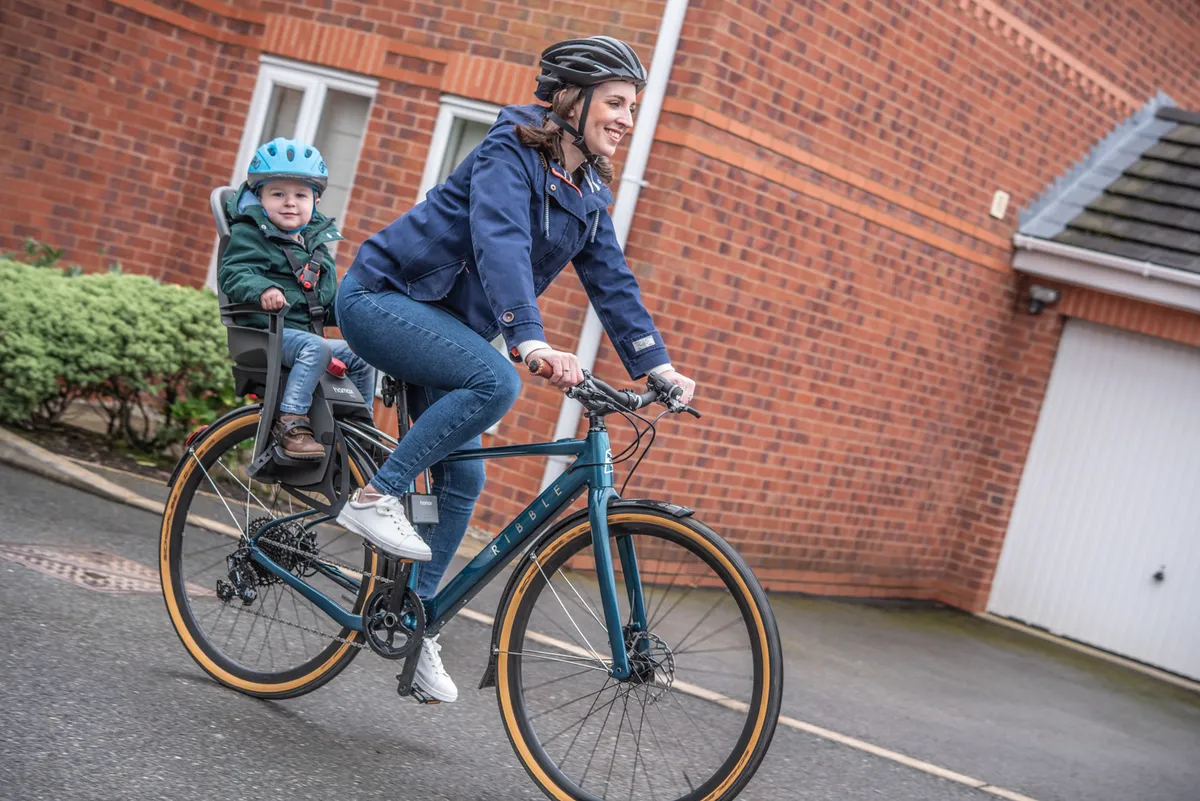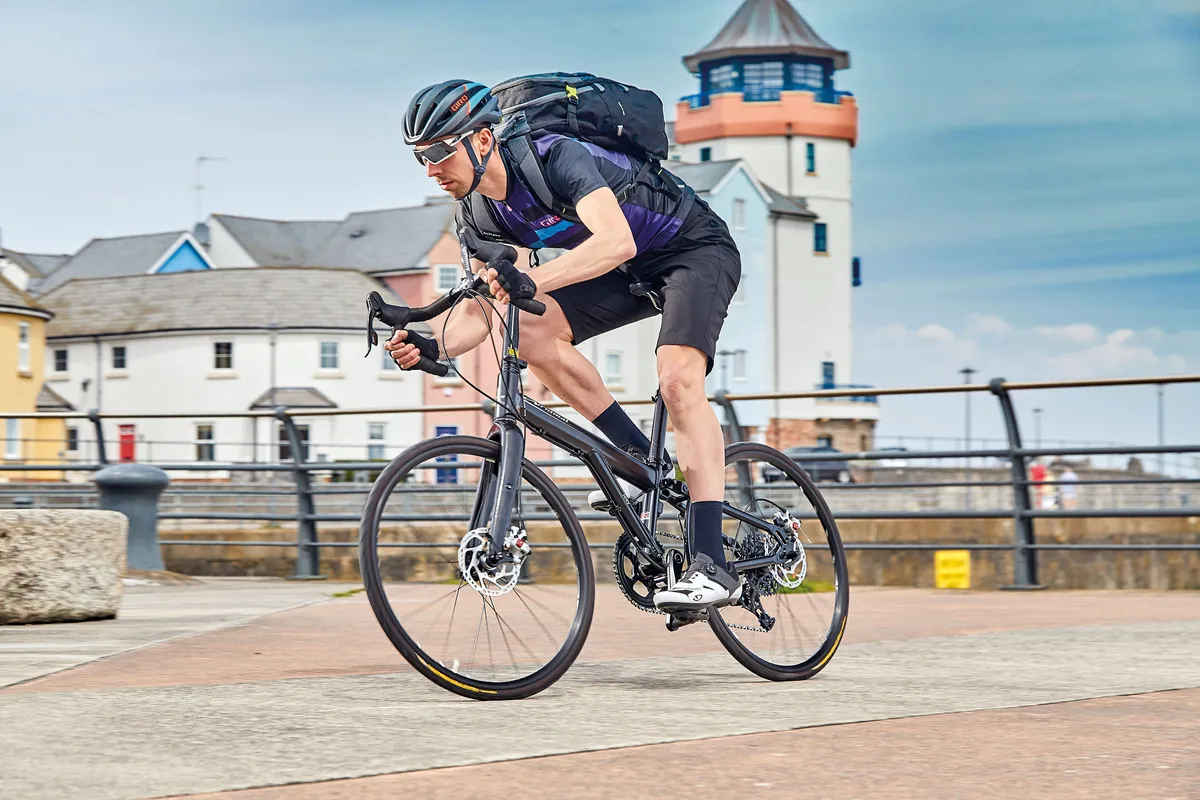There’s more choice than ever when it comes to buying a bike, whether you’re browsing your local bike shop or shopping online.
As a result, choosing the best bike for your needs can be a minefield – but fear not, because BikeRadar is here to help.
Let us guide you through buying the perfect bike, from finding the right machine for your goals, setting a budget and choosing a shop, to selecting components, getting the right size and taking a test ride.
Read on for the ultimate guide to buying a bike in eight steps – or use the links below to skip to the section you need.
- Set your goals
- Set your budget
- Choose a shop
- Choose your gears
- Choose your brakes
- Get the right size
- Do you need suspension?
- Take a test ride
1. Set your goals
Where to start? Well, we’d recommend deciding on your goals for the bike. If you can describe what you want to do with your new bike, you’ll start to immediately narrow down your options.
Broadly speaking, you have the following main options when it comes to deciding on the best bike for your needs: a road bike, mountain bike, hybrid bike, gravel bike, folding bike, city bike or singlespeed/fixie.
Form follows function, and that’s especially true of bikes. Different bikes are intended for different types of riding and some are very specific to their purpose. While most bikes will be versatile enough for you to ride to work, to the shops and round the hills on the same bike, honing in on your goals will result in choosing a bike better-suited to your riding intentions.
One of the most common aims is simply to start cycling to work, replacing the crush of public transport or the (financial and environmental) cost of driving.
If you’re in the UK, Cycle to Work schemes make this an attractive, tax-efficient way to buy a bike. If you’re not based in the UK, see if your local government offers a similar scheme.
Are you commuting?
What’s the best bike for commuting? Many bike commuters prefer the more upright position provided by a flat handlebar, on a hybrid bike designed to combine speed, comfort and versatility.
Drop-bar road bikes are another good option for the commuter, especially those bikes designed with the ride to work in mind and with the required mounts for mudguards and a rack. They’re also likely to be a bit faster than a hybrid.
In either case, it’s a good idea to fit mudguards to protect yourself from rain – important if you intend to commute by bike regularly – and possibly a rack at the rear to carry luggage more comfortably than in a backpack.
If you want to venture further afield than the ride to work, a hybrid or road bike will also allow you to explore country lanes and bike paths at the weekend.
Is road riding your thing?
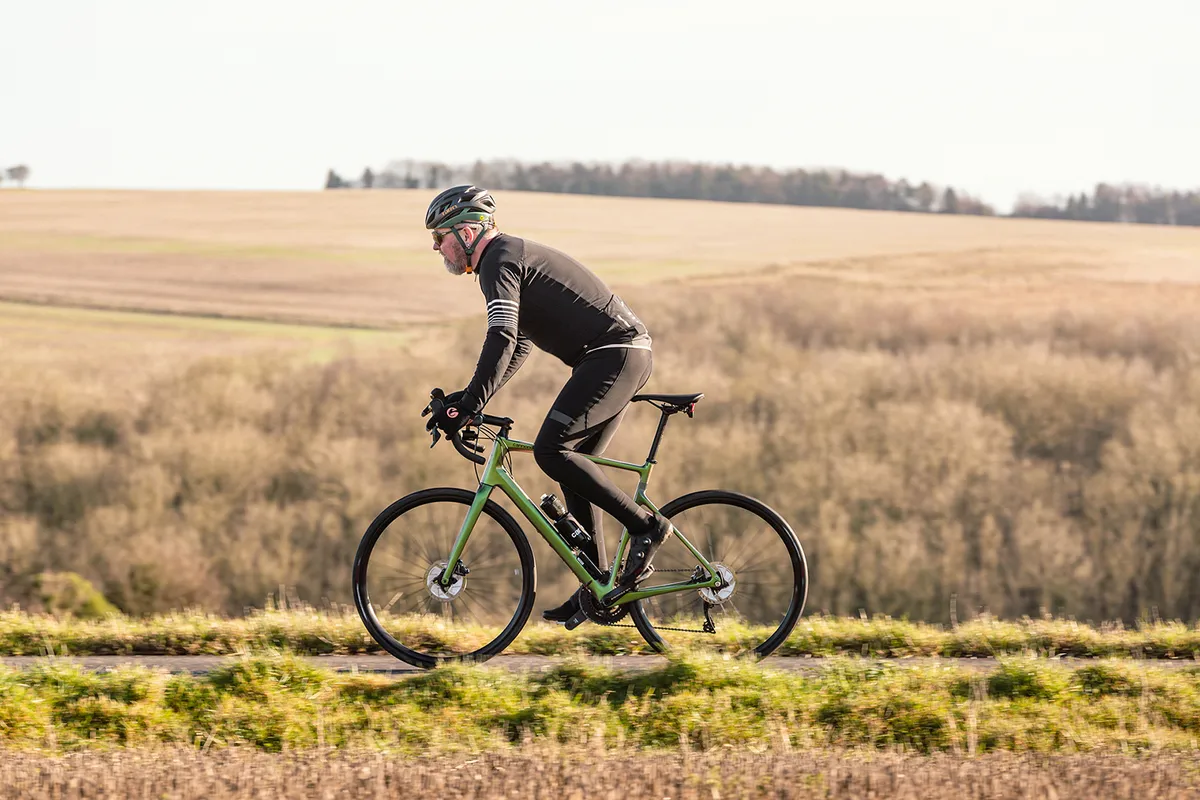
If your goals are a bit sportier or you’re expecting to ride further, but still on tarmac, then you should almost certainly be looking at drop-bar bikes.
They come in race-oriented designs, with a more aggressive, aerodynamic riding position, or endurance-type bikes, where the position is a bit more upright.
Unless you’re racing, an endurance road bike is the sensible option, with a more relaxed geometry and, in many cases, increased versatility thanks to increased tyre clearance and mounting points for mudguards and a rack.
If you are focused on performance, and are confident a racier position will work for you, the latest aero road bikes are designed for all-out speed, while climbing bikes place more focus on low weight.
Taking to the trails?
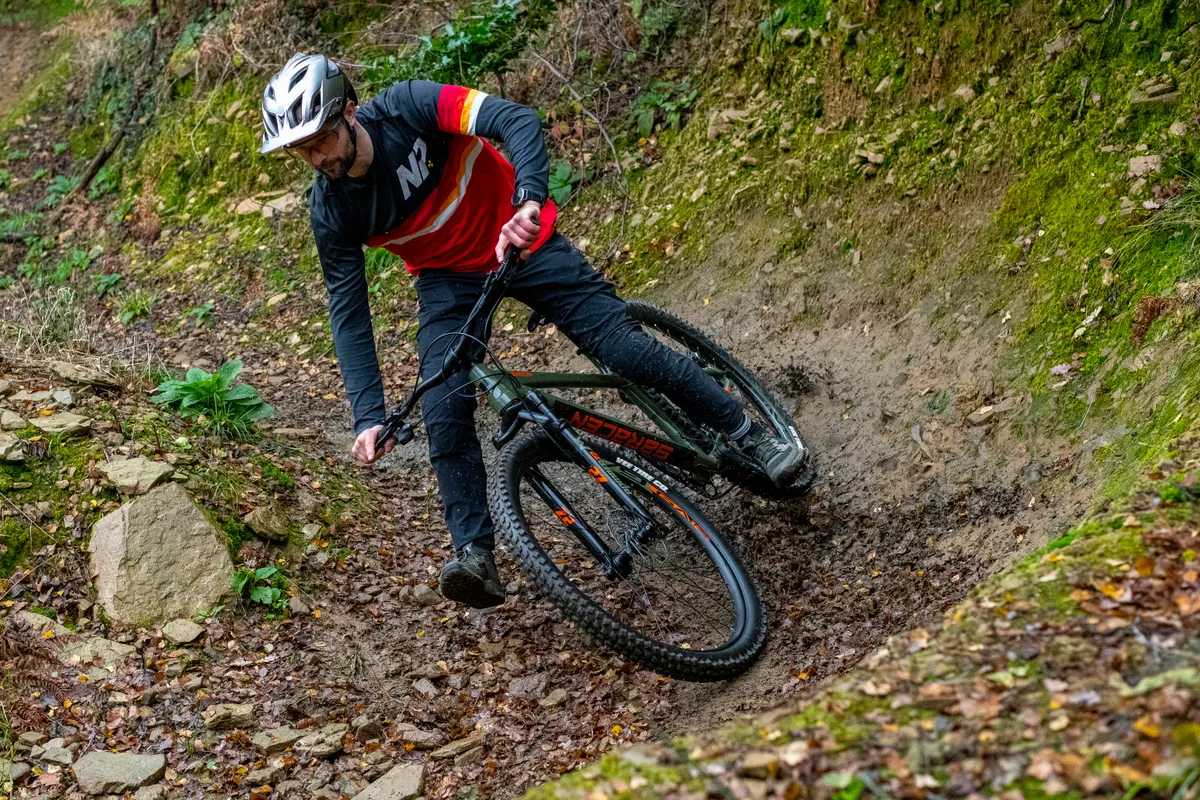
If you want to head out onto the trails, then a mountain bike is the way to go. Perhaps you’re already into outdoor sports and you want to get deeper into the countryside, or you fancy zooming round your local trail centre or bike park.
Either way, you need an upright position for control, fat tyres with lots of grip, a big range of gears and powerful brakes.
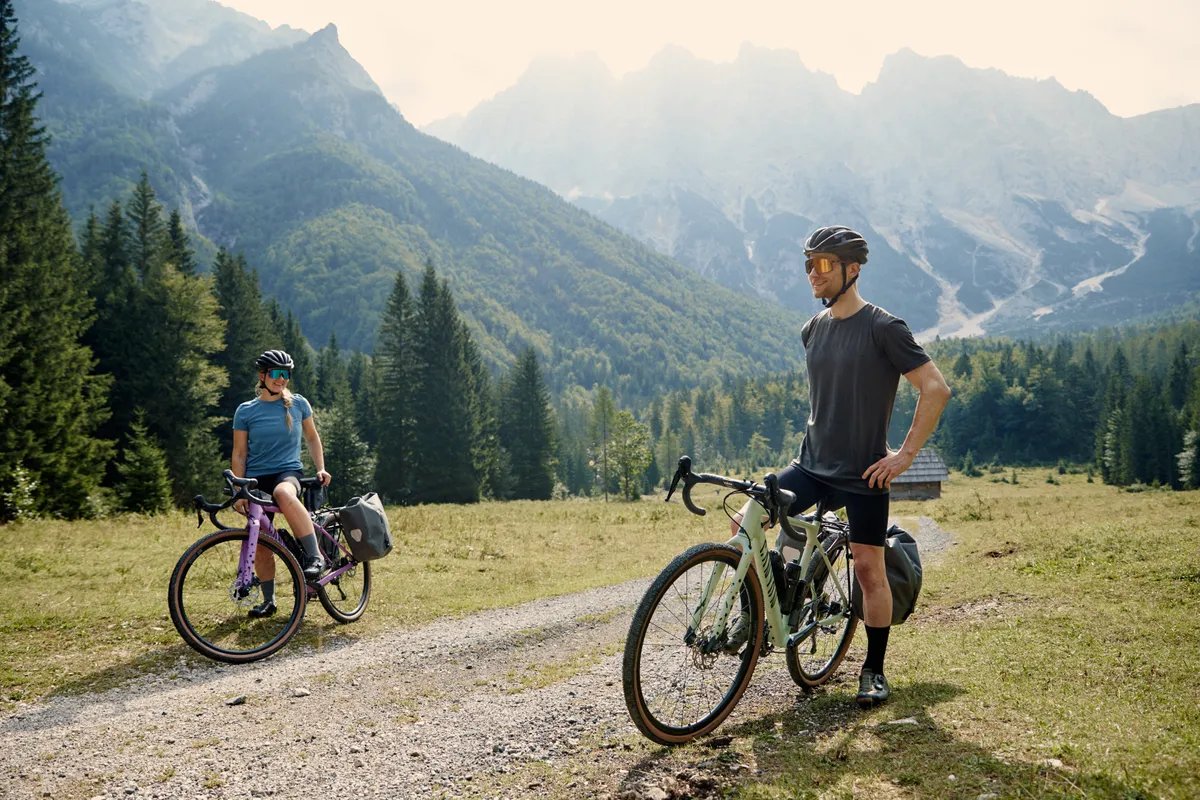
Bridging the gap between road bikes and mountain bikes, the best gravel bikes are a popular choice.
They have drop bars, but chunky gravel bike tyres with plenty of grip, so you can tackle tow paths and other unmetalled surfaces such as gravel tracks and bridleways, but still ride reasonably fast on roads.
What about an electric bike?
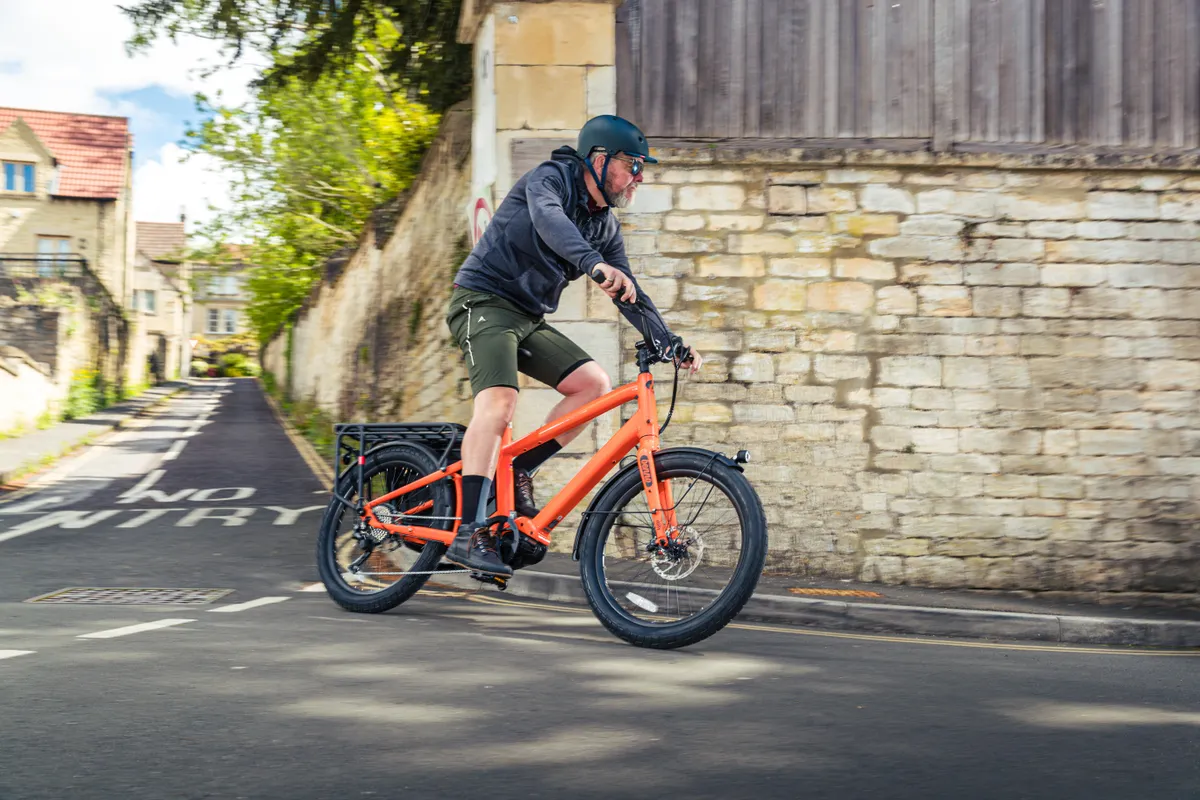
Not confident of your fitness or want a little help getting up the hills? Take a look at an electric bike. The latest advances in battery and motor design mean that electric bikes offer a genuine advantage, especially when it comes to tackling hills and zipping away from the lights.
There’s a broad range of bike styles available with a motor, from flat-bar hybrid electric bikes to electric mountain bikes. You can even find racy-looking electric road bikes with drop bars and a neatly-integrated motor.
Do you need urban practicality?

If you’re planning ‘mixed-mode’ trips, such as a commute that involves a train ride, then a folding bike may be perfect for you.
While folders are usually a bit slower and heavier than regular bikes, nothing beats their convenience or ease of parking/storage. You can’t sneak a full-size bike onto a rush-hour train or under your desk. At the luxury end of the market, there are electric folding bikes available, too.
If you’re not going very far, and you live somewhere flat, a city bike or 'Dutch bike' is a viable option. Upright, sedate and dignified, they’re perfect for simple transportation.
Similarly simple and well-suited for urban riding are singlespeed or fixie bikes.
Based on bikes used for racing on indoor bike tracks, fixies don’t have a freewheel: if you’re moving, you’re pedalling, although most come with the option to swap to a singlespeed with a freewheel, too.
2. Set your budget
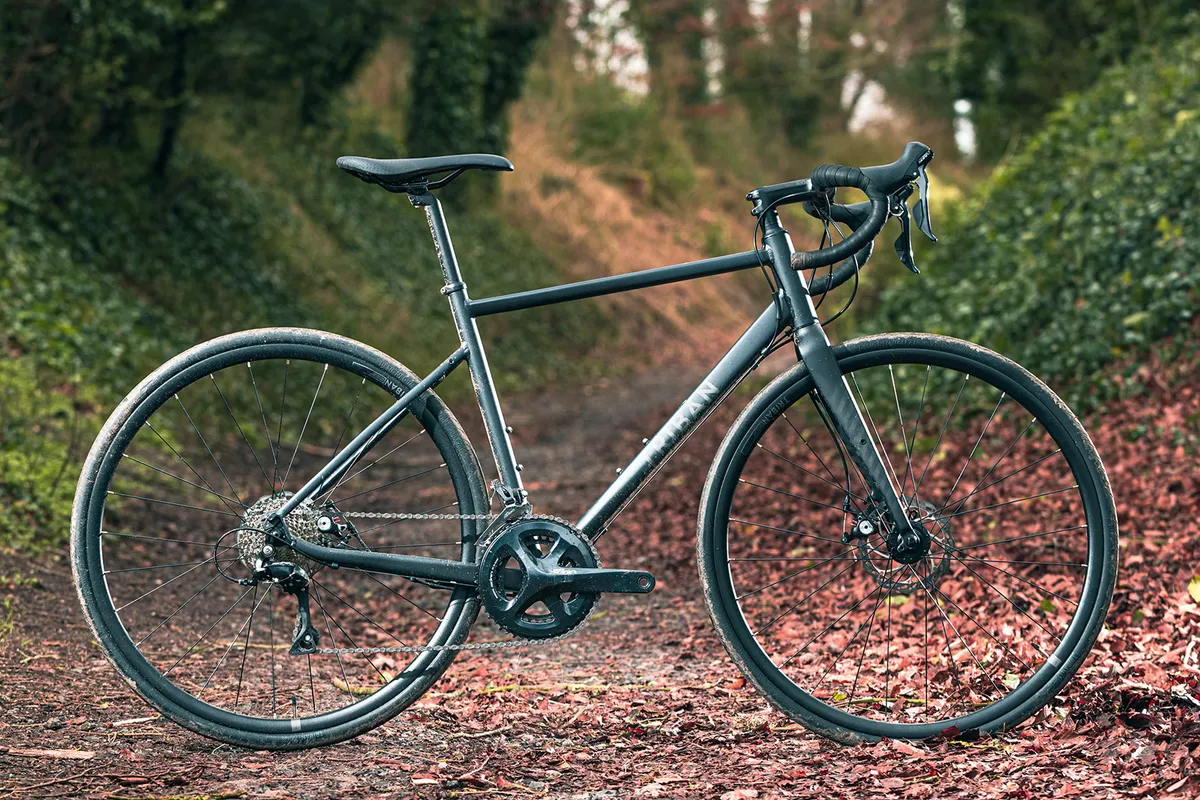
So, you’ve decided what type of bike you need. Now, how much do you have to spend?
Non-motorised bikes typically cost from around £200 upwards. You can get bikes that cost less, but they’re almost always poor quality.
If you’re buying a cheap road bike or cheap mountain bike, £500-£750 is a good starting point for a ‘serious’ bike with a quality frame and components. The same goes for a cheap gravel bike or good-quality hybrid.
At this price point, you’ll start to see bikes with a relatively lightweight, well-thought-out frame and branded components. Most importantly, it should be durable. The Achilles heel of cheap bikes is that even if they work well when they’re new, they might not stay that way.
However, if your budget can stretch and you plan on using your bike regularly, we’d recommend spending around £1,000. Here, the best road bikes under £1,000 and best mountain bikes under £1,000 start to sport quality components, with a frame worthy of upgrading as your riding progresses.
Needless to say, you can spend a lot more. It’s not uncommon for the best road, mountain or gravel bikes to demand five-figure sums. As with any high-end purchase, it’s a case of diminishing returns but, for most committed cyclists, an investment of around £2,000 to £4,000 will get you a top-quality bike.
3. Choose a shop
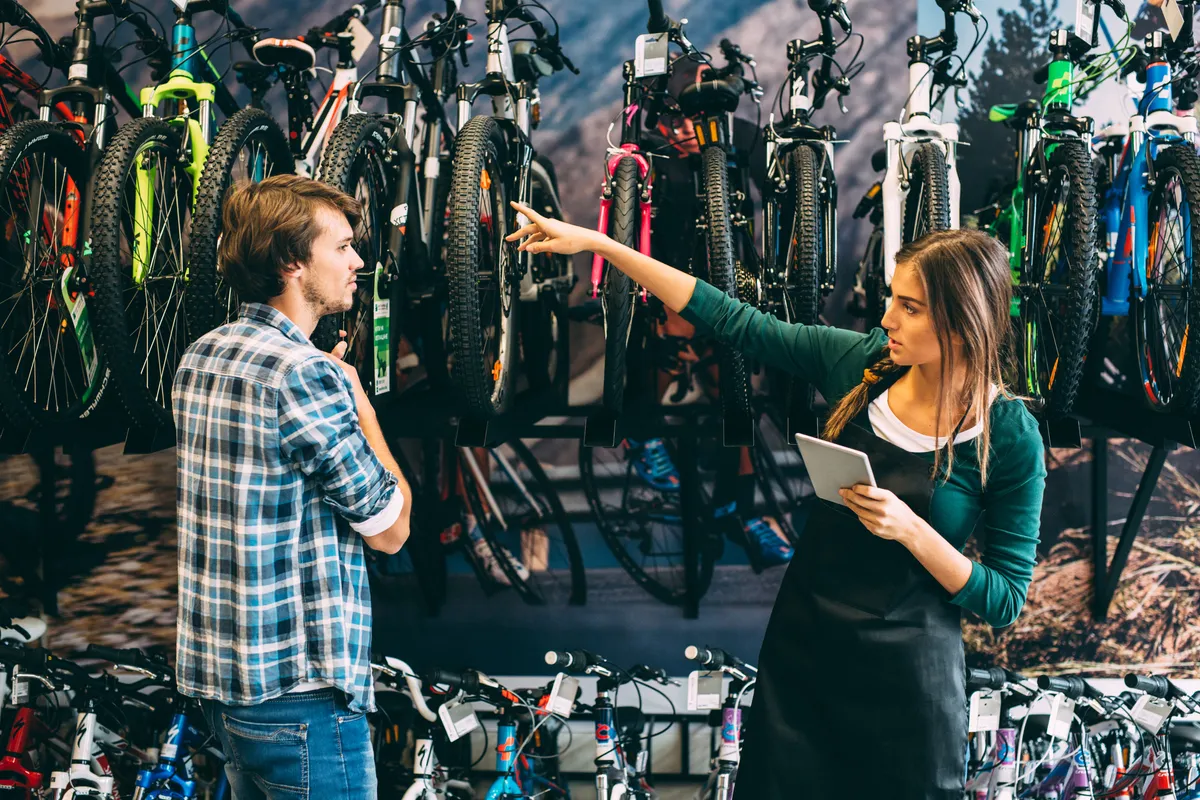
Bike shops all have their own personalities. A shop that focuses on high-end road racing bikes isn’t necessarily the best place to start if you’re new to cycling, unless you enjoy being bamboozled by jargon or just want to look at fancy bikes beyond your budget.
A shop that’s friendly to beginner riders will have staff who run you through a range of options without bamboozling you with jargon. They will ask you what you’re planning to do with the bike – and listen to your answers – rather than rattle off a stream of buzzwords.
If you’re serious about making the best purchase, browse a few bike shops before you think about buying. Listen to the way the staff deal with other customers, and get a feel for the type of bikes they sell. Different shops will stock bikes from different brands.
As well as expert advice, a bike shop should make sure the bike is put together properly. Bikes come from the factory in varying states of disassembly, depending on the manufacturer, and the right tools and knowledge are important to make sure the bike is fully safe and roadworthy.
A good bike shop will also offer a post-delivery check-up, typically after a month or two, so they can make sure everything has bedded in properly and is still working well. As bikes need maintenance and replacement parts such as tyres and inner tubes, buying a bike can be the start of a long relationship.
What about second-hand bikes, online shops and direct-sales brands?
A lot of the best deals available on bikes – new and old – are to be found on the internet.
Some brands (often referred to as direct-sales brands), such as Canyon and YT Industries, specialise in internet sales and only offer their bikes via the web. You avoid paying the bike shop’s cut of the sale price, so internet vendors usually offer a higher spec for a given price.
However, buying a bike online has its drawbacks. You miss out on the personal touch if you buy online, so if you don’t have an expert friend to offer advice, or you’re unsure of what you want and need, you might be better off with a bricks-and-mortar bike shop for your first purchase.
If you do buy online, the bike will likely arrive in a box with some basic assembly required. Assembling a bike is a relatively simple job, but it’s worth setting aside at least £30 to £50 to get things sorted mechanically with a basic service during the first month, in case you need some help from a shop.
eBay and other auction sites are another obvious online option. However, we’d only recommend purchasing here if you know specifically what you’re looking for. And make sure you read our guide to buying a second-hand bike.
4. Choose your gears
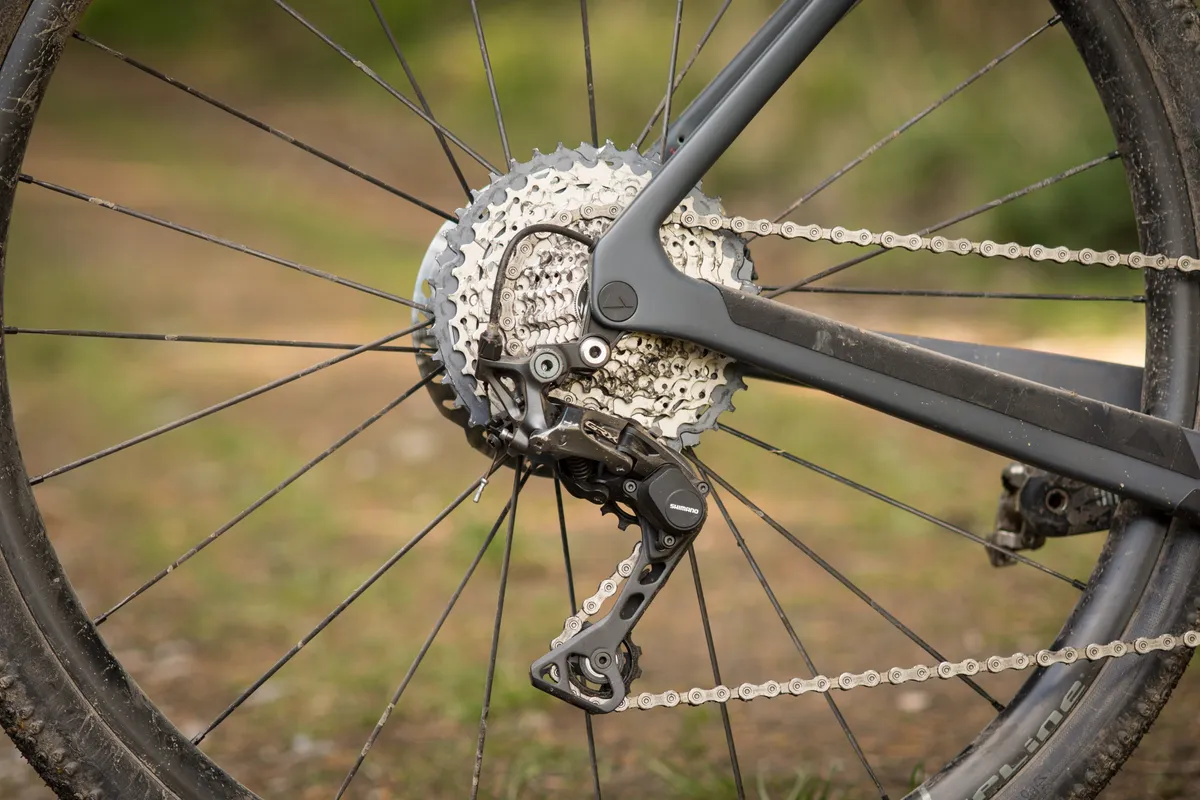
Right, let’s take a closer look at some of the specific details you need to consider when buying a bike.
Most modern bikes have lots of gears. Systems with 20, 22, 27 and even 30 gears aren’t unusual.
The idea here is to provide you with a wide range of gears so that you can ride comfortably up or down anything, so it’s not the number of gears that really matters but whether the range fits the terrain you’ll be riding in.
Most gear systems use derailleurs – mechanisms that move the chain, either from one chainring to another at the front of the bike (this is a front derailleur), or between the sprockets on the rear cassette (a rear derailleur).
The gears are part of the groupset – a collection of components that comprises the derailleurs, gear shifters, crankset, cassette, chain, bottom bracket and brakes.
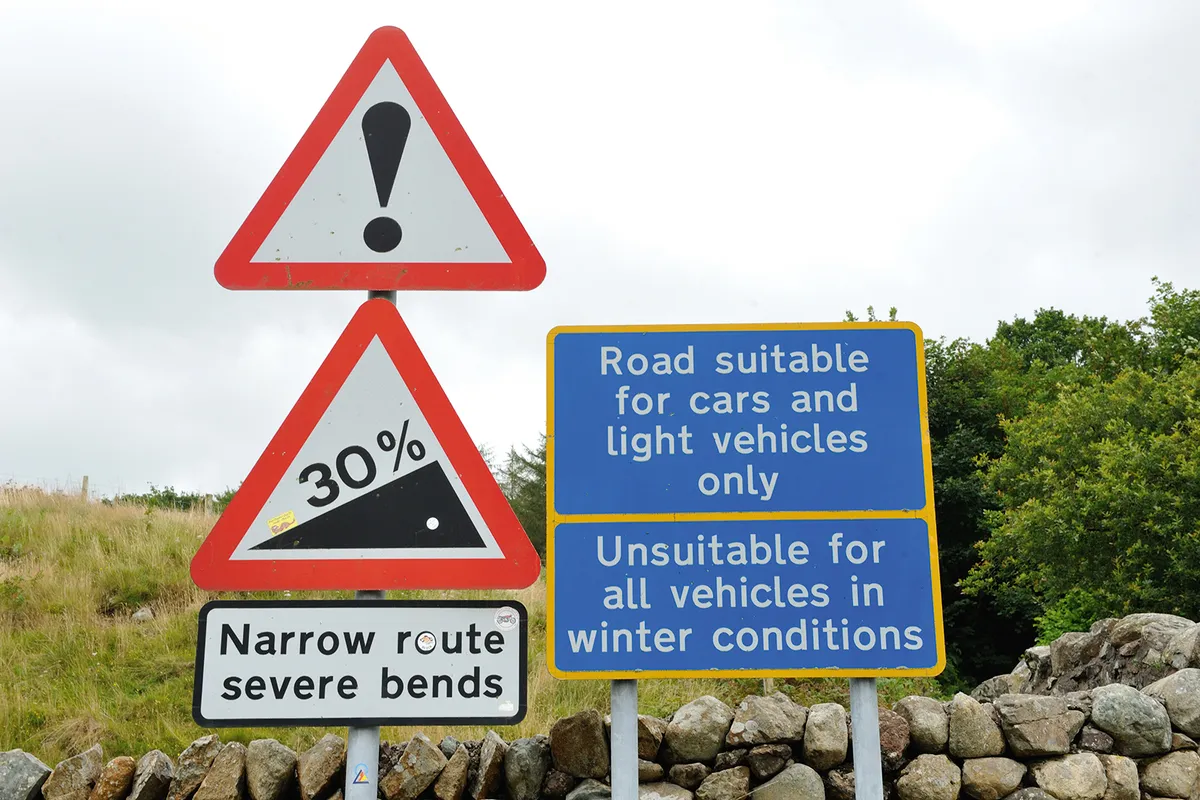
Most bikes should be specced with a groupset that matches its intended use, but there can be significant variability from one bike to the next, so make sure your potential purchase has appropriate gearing for the riding you have planned.
Gears enclosed in the rear hub – unsurprisingly called hub gears – are enjoying something of a comeback on practical bikes. They’re available with between three and 14 gears, operated by a single simple control on the handlebar.
Hub gears are a little heavier than derailleurs, but their ease of use, weatherproofing and tidiness makes them attractive to many riders who value practicality.
Some riders have abandoned gear mechanisms altogether and ride singlespeed bikes – bikes with just one gear. These bikes make for simple urban transportation in flat areas, and off-road versions provide a challenge for experienced mountain bikers who enjoy not having to think about gear choice.
If you choose a geared bike (by far the most likely option) and are unfamiliar with the system, see if the bike shop can show you how to use the gears, and then take the time to get familiar with them.
Find a flat, traffic-free spot such as a quiet car park and click your way up and down the gear range. You’ll probably find the lowest gears feel far too easy on the flat. That’s how it should be – you’ll be glad you have them when you’re tackling a hill.
5. Choose your brakes
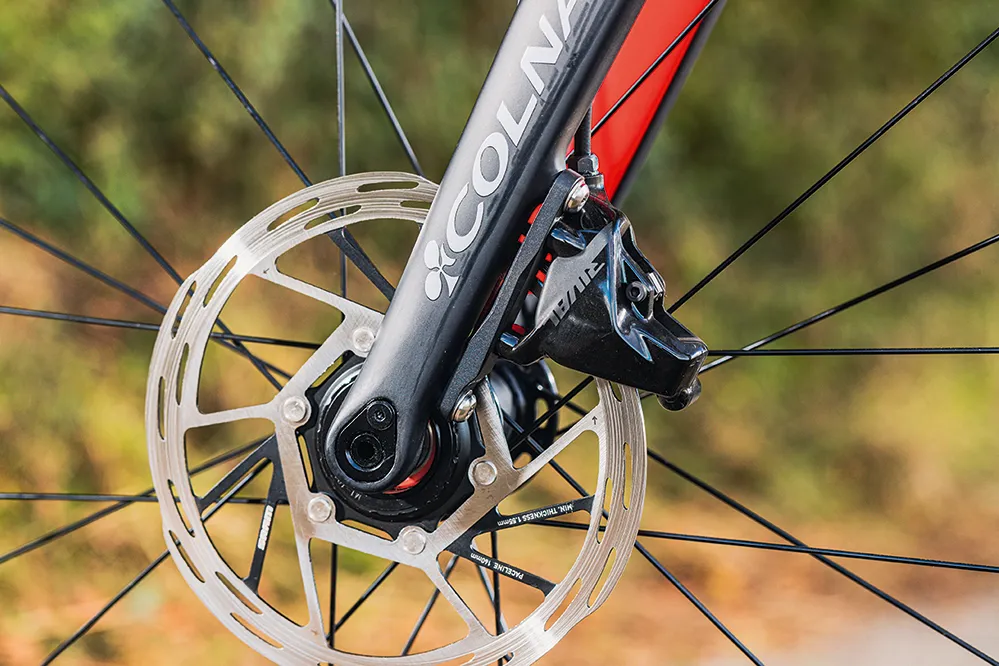
While there used to be a wide range of bike brake types, many new bikes now come with disc brakes, replacing the older-style rim brakes or cantilever brakes.
Disc brakes give you more consistent stopping, particularly in the wet, and better control over how hard you brake. They’re a bit heavier than rim brakes though.
More expensive bikes will have hydraulic disc brakes, whereas mechanical disc brakes are more usual on cheaper bikes. Hydraulic brakes offer improved modulation and are a worthwhile upgrade if you’ve got the cash.
Cheaper road bikes will still come with rim brakes, while cantilever brakes are common on affordable hybrid bikes. Some Dutch bikes have drum or back-pedal brakes.
6. Get the right size
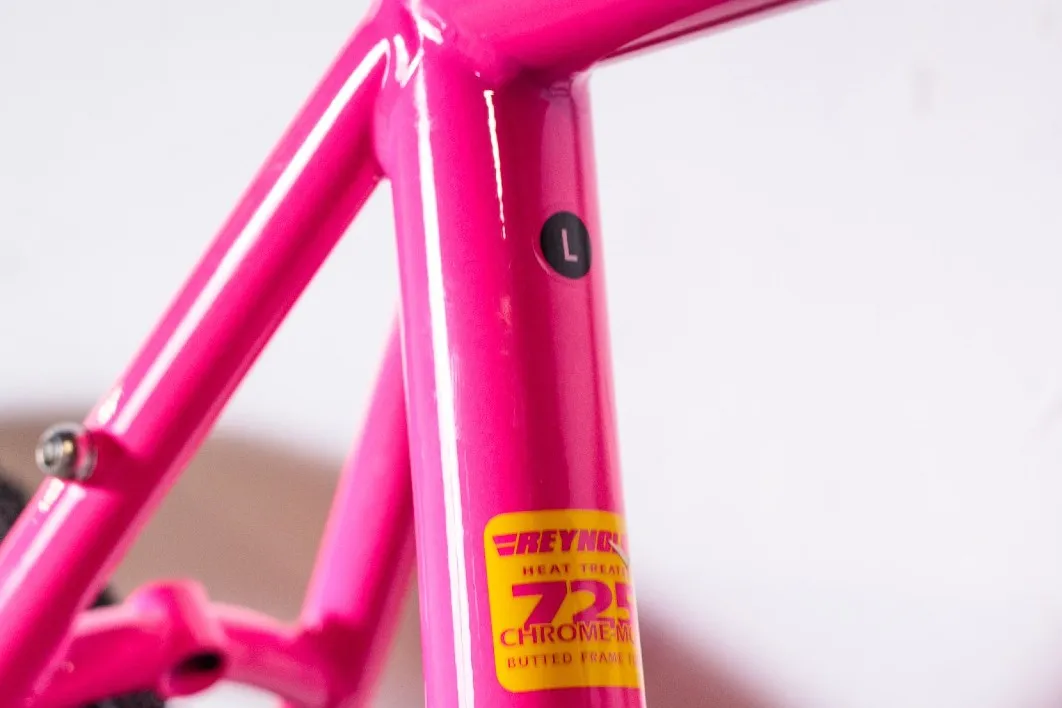
One of the many reasons to buy a bike from a specialist shop is that they’ll make sure you get a frame that’s the right size.
Bike size is quoted in centimetres, inches or in T-shirt style (for example, from extra-small to extra-large). Unfortunately, there’s little consistency from one brand to another, but we’ve got guides to road bike sizing, mountain bike sizing and women’s bike sizing to help.
Getting the size right is important, for both comfort and safety. A bike that’s too large will be ungainly and possibly dangerous, while you won’t be able to get the saddle height high enough for comfortable pedalling if the bike is too small and you’ll feel cramped.
Bike brands will usually have a size chart on their websites, that gives the precise measurements of each bike size. Understanding the intricacies of road bike geometry or mountain bike geometry is quite complex, but there’s usually a recommended rider height range set out for each size too.
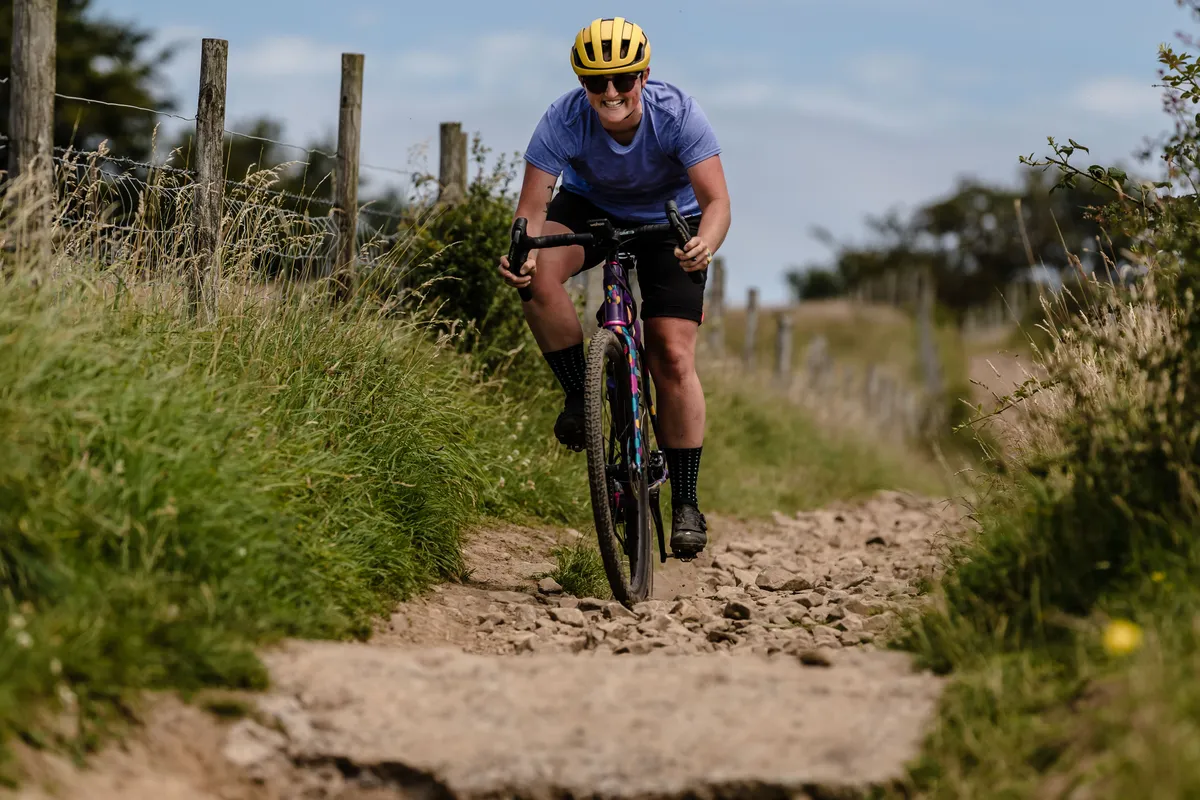
You can also take a look at our guide on how to measure a bike frame, to familiarise yourself with the key measurements you’re likely to encounter.
You should be able to stand over the bike frame with your feet flat on the floor and a few centimetres’ clearance between your body and the bike. You need more clearance if you’ve chosen a mountain bike and you’re going to ride it off road, so you have space for rapid dismounts.
You should be able to set the saddle height so you have a comfortable reach to the pedals, with your knee just shy of straight when the pedal is at the bottom of its rotation.
The tube supporting the saddle is called the seatpost and will have a mark to indicate its maximum safe extension. Don’t raise it above this. If you need to raise the saddle this high, you need a larger frame.
Frame size doesn’t just indicate how tall the bike is. As frames get bigger, they also get longer, so if a bike is the wrong size for you, the reach to the handlebars will be too short or too long, both of which quickly get uncomfortable.
7. The suspension question
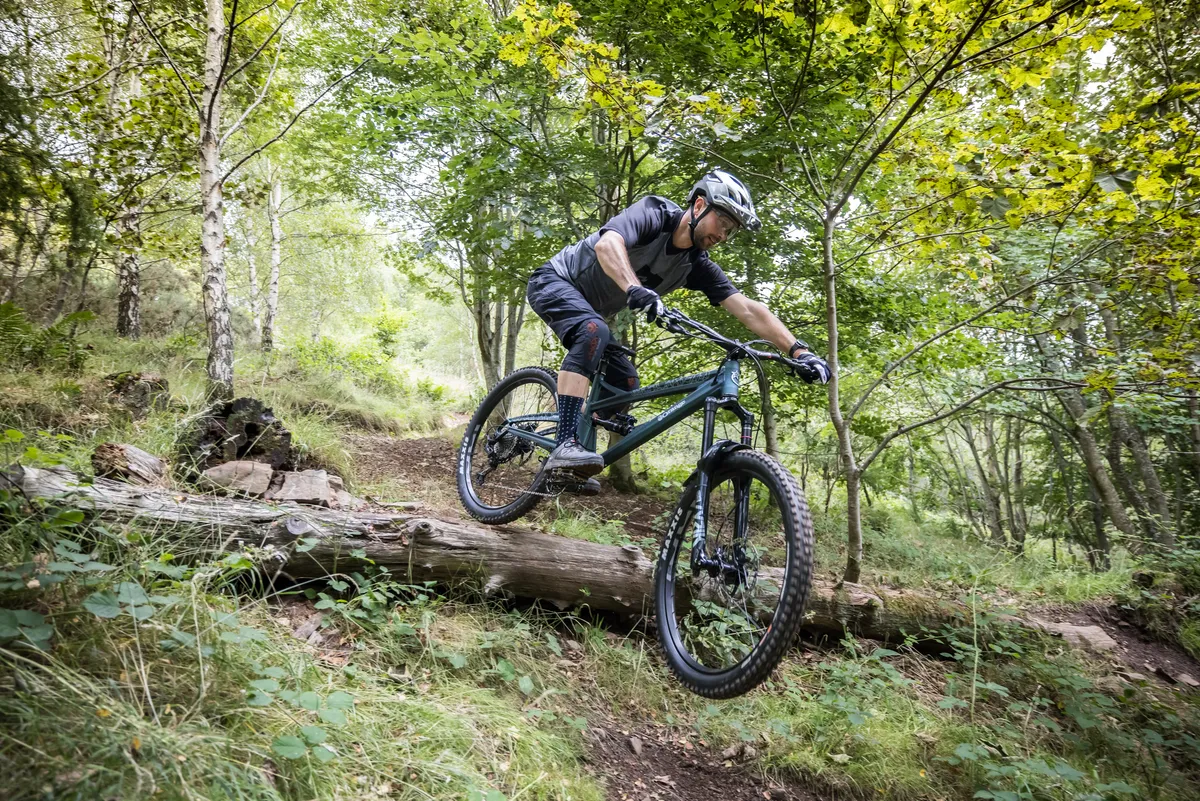
Mountain bikes intended for real off-road use have shock-absorbing suspension systems.
Bikes with suspension just up front, in the fork, are known as hardtail mountain bikes, while bikes with front and rear suspension systems are referred to as full-suspension bikes.
While some cheap mountain bikes and hybrid bikes have suspension forks, inexpensive suspension systems work poorly and add weight and complexity, so it’s best to steer clear of them unless you have a healthy budget (we’d say around £500 and up for a hardtail mountain bike).
It’s also worth considering whether you really need suspension if you’re riding a mountain bike or hybrid on the road, or your off-road excursions are limited to well-made tracks and towpaths. Wide tyres run at a relatively low pressure will often add enough suspension to sufficiently improve comfort.
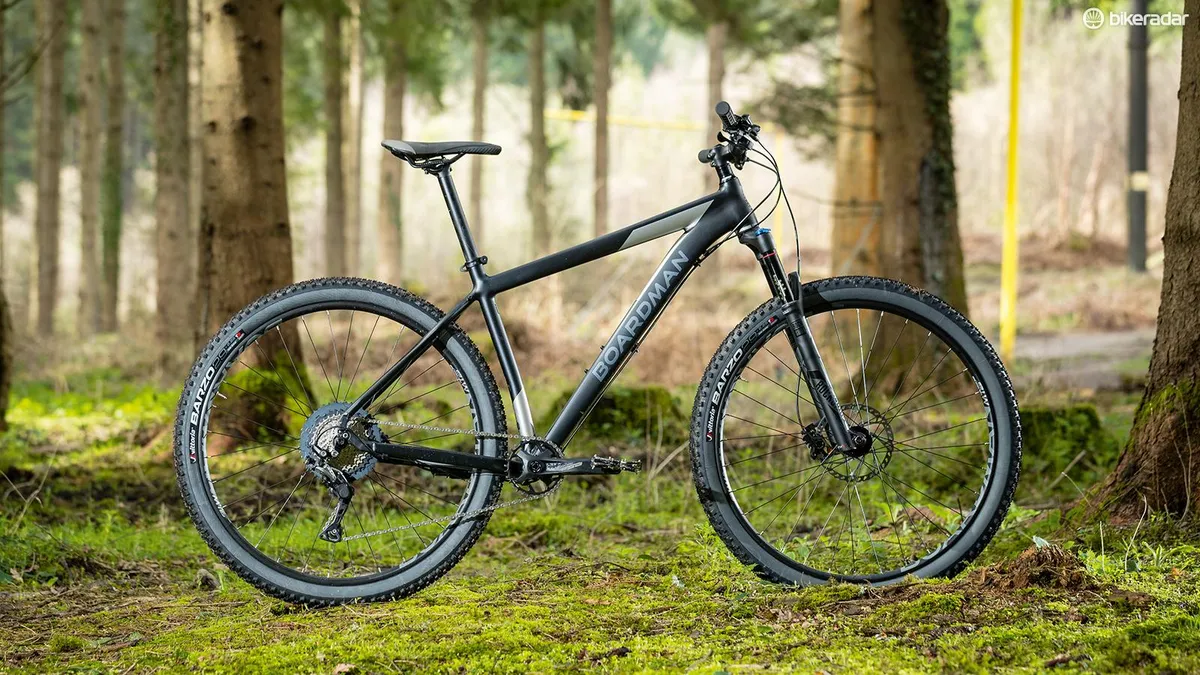
However, if you’re planning any serious off-road riding, mountain bike suspension makes sense. We’d recommend budgeting at least £1,500-£2,000 for a full-suspension mountain bike.
If you have less to spend, the best hardtail mountain bikes will normally provide better value for money, with more of your budget put into the frame and components.
Different mountain bikes have different amounts of suspension travel. How much suspension do you need on your mountain bike?
Well, once again it depends on where you’re planning to ride your bike but, as a quick overview, a cross-country bike will have 60-110mm of travel, a downcountry bike will have 110-130mm of travel, a trail bike will have 130-160mm of travel, an enduro bike will have 160-180mm of travel and a downhill bike will have 180-200mm of travel.
It may be tempting to go for the beefy looks of an enduro bike or downhill bike, but the extra weight and extreme geometry will be counterproductive if you’re only riding gentle off-road.
If off-road riding is your thing, our article on choosing the best mountain bike should be your guide.
8. Take a test ride
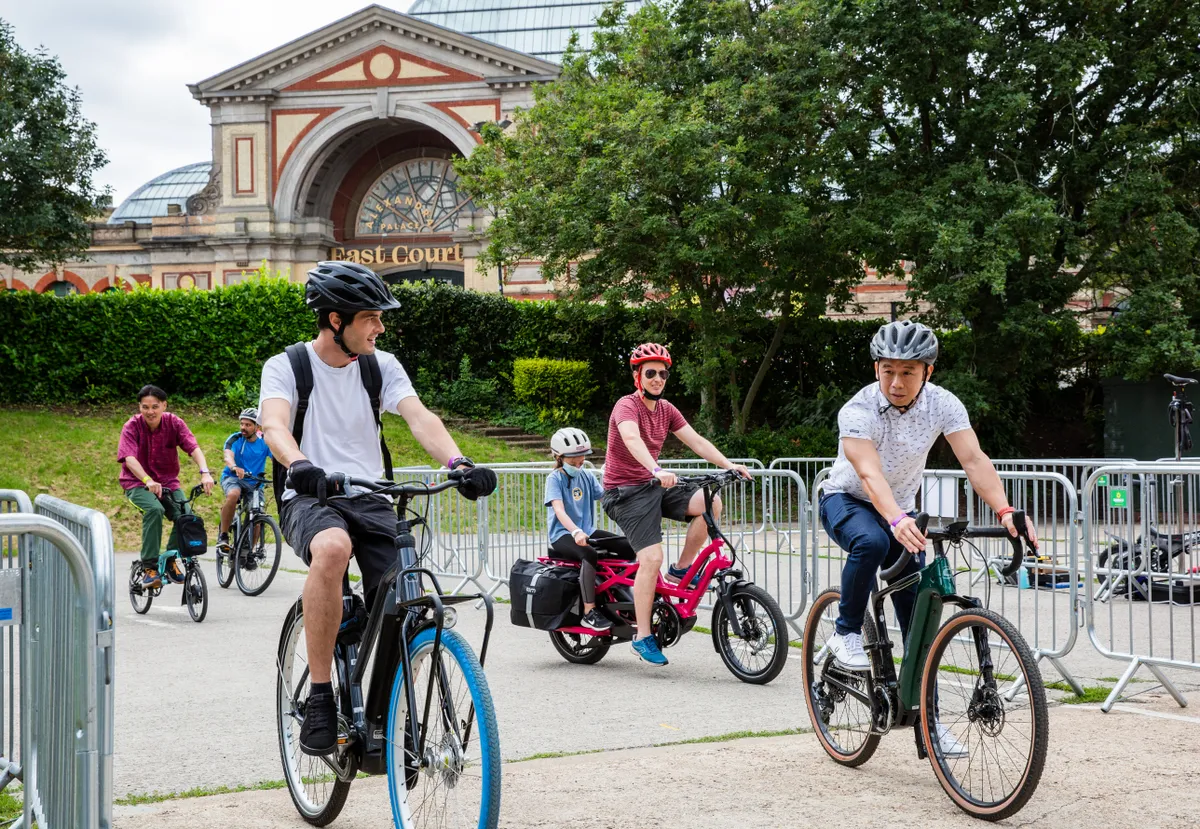
When it comes to testing your potential purchase out, even a spin round the block or car park can help you get a feel for the fit and handling of your potential new bike. Expect to leave cast-iron security with the shop: most commonly a credit card and proof of identity.
Some shops will offer the opportunity for a longer test ride and some bike brands also organise demo days, where you can ride a range of their machines on a set course.
Taking a bike for a ‘proper’ ride, be it on your local roads or trails, is a sure-fire way to find out whether it’s your next true love.
